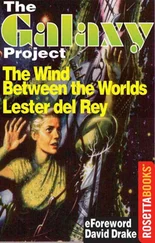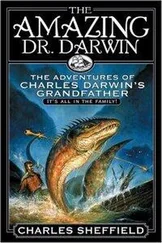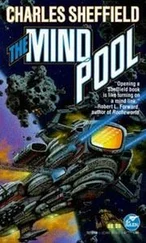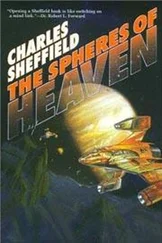Observers in Quito had heard the crack as the head passed through supersonic speed. Now they waited for the first sight of it. Along the equator, far to the west of Tether Control, a thin line of contrail at last became visible. It spread from the speeding head of the stalk in a wake of turbulent ice crystals. The shadow formed a dark swath on the equator, neatly bisecting the globe into north and south hemispheres. There was a steady rumble like approaching thunder.
High in the Andes, Indian peasants paused in their daily work of scratching the stubborn soil, long enough to offer their prayers to the old gods of the storm. Luis Merindo watched the scopes in Tether Control and sought the same reassurances from the newer deities of aerodynamics and electronics. The head of the beanstalk was a millisecond off at the first triangulation point. How much would that become when it reached the pit? He was relieved to see an estimate from Santiago flashing up onto his display. Just a few meters. They had more than enough margin for that at the pit.
As soon as atmospheric entry was initiated, Rob’s attention moved to the temperature sensors set throughout the length of the stalk. The change in gravitational potential as the beanstalk dropped would appear partly as kinetic energy and partly as dissipated energy within the stressed interior of the cable. That stretching and flexing would appear as adiabatic heating and cooling, driving the local temperature up and down differentially along the length. A thousand degrees was the limit. With ample strength at normal temperatures, the cable would weaken drastically above a thousand. The calculation had been one of the trickiest parts of stalk design, a bewildering maze of orbital dynamics, nonlinear elasticity and thermal diffusion.
Rob was relieved to see that his estimates were on the conservative side.
The cupped upper end of the beanstalk, moving almost tangentially to the curve of the Earth’s surface, engulfed the ballast asteroid. The mesh of silicon threads that formed the cup began to take the strain as the ballast sought to continue its upward path. After one second, the stresses stabilized. The trajectory of the upper end of the beanstalk now became geostationary, moving to remain vertically above Quito ’s tether point. The tension in the cable was close to the design maximum value of eighty million newtons per square centimeter. Although the head still descended, that movement was less and less rapid.
The blunt lower end of the beanstalk was visible now from Tether Control. Its movement seemed almost leisurely. It descended like a sluggish, questing blind-worm seeking the pit that would house the tether. Luis Merindo watched his displays as the head disappeared behind the towering piles of rock around the hole. He checked his read-outs. In-filling would begin in thirty seconds. After that, only one question meant anything: Would the tether hold, against the billions of tons of upward force created when the ballast swung wide and high above synchronous orbit?
In the secondary viewing room at Santiago, Howard Anson was also watching the head of the beanstalk. He had no feeling for engineering, and the sight for him brought memories from another time of apocalypse. “ Then will I headlong run into the Earth ,” he whispered to himself. “ Earth gape. Oh no, it will not harbor me. Mountains and hills, come, come and fall on me, and hide me from the heavy wrath of God .”
That earned him a peculiar look from the senate aide sitting next to him. Anson wondered if the man was objecting to his liberties with Marlowe’s classic text. He smiled and shrugged in an embarrassed way, and the other turned his attention back to the screens.
All opportunities for abort were now past. The remaining question centered on the tether. Unless that held, the beanstalk would be dragged from its temporary lodging north of Quito and swing up and away again, out past the Moon. The huge inertia of the system meant that even this question would take many seconds to answer by eye; the smart sensors on the beanstalk would know it in less than a heartbeat.
The base of the beanstalk touched the bottom of the pit, five kilometers below ground level. As it did so, mountains began to move. Landslides were following the broad head of the beanstalk into the depths of the prepared chasm. The rumble of detonations, placed carefully around the edge of the pit, merged into the continuous roar of a billion tons of rock as it fell into the pit and packed down under the pressure as more earth and boulders followed.
It was the time of maximum stresses. The cable, caught tight at head and tail, flexed and contorted along its length like an agonized snake. Local transient stresses were running above a hundred million newtons per square centimeter. Each gauge monitored by the control panels changed and changed again, too fast for any human to follow. The central computer analyzed the incoming data stream, decided on the most critical variables, and passed along a status report simple enough and slow enough to be understood by humans.
There was room in Rob’s head for only three questions: Were the oscillations along the length of the cable in an unstable growth mode? Would the ground tether hold? Was the ballast asteroid secure in its holding cup, a hundred and five thousand kilometers above the Earth?
Five seconds passed. The flickering chaos of signals on the board in front of him began to smooth to a pattern that he could follow even without computer assistance.
Stresses and temperatures were reporting within tolerances.
The ballast was firmly attached at the beanstalk’s upper end.
Signals from Tether Control implied a secure anchor. The final few hundred million tons of rock were falling to the bottom of the pit.
An army of robots stood ready to deploy along the beanstalk.
It was ending, in a mutter of damping stresses and a groan of settling rocks. The beanstalk, stretched tight between the opposing forces of ballast and tether, was molding to a stable configuration, a vast arching bridge between Earth and Heaven. The path was secure between Midgard and Asgard.
Three minutes after Contact, Rob felt comfortable enough to switch displays to the powersat. It was in the right position, lagging the stalk enough to be well out of the way had trouble arisen, close enough to be moved easily to contact with it when the time was right. He signalled it to move in and begin to attach to the superconductors. With ample power for the drive ladder, the robots could begin installation of cargo and passenger transport modules.
As the powersat made its first connection with the beanstalk, Rob switched to yet another camera. This one was set in the powersat itself, near the point where the superconductors would be hooked on.
Rob’s intention was to check the position of the leads, but the camera was coincidentally looking straight down along the length of the beanstalk. In the observation center where Howard Anson and Senta Plessey were located, a communal groan went up from the onlookers. The senate aide next to Anson grunted, as though he had been hit hard under the ribs.
“Jesus H.” He turned to Howard and Senta and shook his head. “Do they think they’ll get people to ride that thing? It turns my stomach to think of it.”
His eye, like everyone else’s, was following the cable endlessly down toward Earth. Views from rockets were common enough, but they never gave the onlooker a true feeling for height. There was no direct connection, nothing to tie the mind back unavoidably to the real globe beneath. The beanstalk changed that. There was no doubt here that they were looking down — a long way down — even though the cable itself shrank to invisibility against the background of the cloud-covered planet. As they watched, the first of the maintenance robots moved out from the powersat and began to crab its way precariously down the drive ladder. It was checking the current in each segment, readying for the deployment of the ore carriers, and its hold on the beanstalk was in fact completely secure. The onlookers didn’t know that — or care. The observation center was gripped by a total and breathless silence.
Читать дальше












